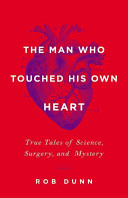2018 School Spending Survey Report
The Man Who Touched His Own Heart: True Tales of Science, Surgery, and Mystery
Little, Brown. Feb. 2015. 368p. illus. photos. notes. bibliog. ISBN 9780316225793. $27; ebk. ISBN 9780316225809. SCI
COPY ISBN
VERDICT By illuminating the contributions of fascinating people who played vital but not always well-known roles in our understanding of the human heart, Dunn offers an unusual and enjoyable survey and update.
RELATED
ALREADY A SUBSCRIBER? LOG IN
We are currently offering this content for free. Sign up now to activate your personal profile, where you can save articles for future viewing




Comment Policy:
Comment should not be empty !!!